|
KidLit in Color: Hello Omar, thank you for answering our questions! What was your inspiration for The Book That Almost Rhymed? Omar Abed: When I wrote this book, I was actually pitching a completely different book to publishers. Some of the feedback I heard for that other story was that it "rhymed too much", or that the rhyme didn't enhance the story. My agent recommended I try to write a non-rhyming story, but no matter how hard I tried, my brain kept defaulting to rhyme... or things that sounded like they almost rhymed. This story was born with the opening page repeating in my mind. "The other day, I wrote this book. You won't believe how long it took..." From there, I discovered the plot. It's kind of a backwards writing process, but it worked out here! KLiC: What are your favorite illustrations in the book? OA: I have so many! Hatem Aly did such an amazing job with this book. Something that caught my eye early in the sketching process was how Hatem added imaginary costumes on the characters as see-through overlays. It helped demonstrate how the characters were really traveling through their imaginations. The story starts out kind of bland and explodes into color as their imaginations develop the story around them. I think Hatem did an amazing job capturing that. Here are some illustrations to show what I mean: OA: You can see how the setting slowly builds around them, and their adorable see-through costumes helping them play pretend. I just thought it was all so well done.
KLiC: What’s the one thing you want children to take away from your book? OA: You said one thing, but I'll give you two. At a surface level, I hope this book helps children discover a love for reading with their parents. I see the way my son latches onto a good book and wants to re-read it, and I hope kids and parents love this book enough that they're both excited to re-read it together. But at a deeper level, I hope this book subtly teaches kids to embrace their siblings / friends in ways that don't come immediately natural to them. In this story, the siblings are in constant conflict over the story, until they realize that maybe both of them were helping the story along in their own way. When we can learn to communicate on another person's level, we can understand them better and empower them. KLiC: What’s next for you? OA: More books! My next book (which hasn't formally been announced yet... shh...) touches on my background as a software developer. In this story, a software bug infects a young boy's book, and the boy (along with a helpful cast of characters) must learn how to stop the bug from destroying his story. No formal timeline yet, but follow me at @OmarAbedWrites for updates. An announcement about that one should go out soon, including the title and illustrator! KLiC: Is there anything you want readers to know about you or your book(s)? I think it's funny that I never planned to write picture books. I enjoyed poetry and music (to a normal degree, like anyone else), but the rhythms and lyrics in each of those somehow led me to children's books. To me, I don't draw hard lines between different writing mediums. It's more of a continuum, a spectrum, than distinct art forms, in my opinion. Who's to say a book can't be sung, or that it needs to have words at all? People are so unique, and their stories should reflect that. Sometimes I have to find the right medium to deliver certain stories, which is why I write across genres (YA, picture book, poetry) and don't consider myself "one type" of author. We're thrilled to welcome Paola Santos on the blog to discuss her upcoming book, How to Eat a Mango with illustrations by Juliana Perdomo. What was your inspiration for How to Eat a Mango? My inspiration for How to Eat a Mango was my abuelita, my grandmother, and everything it means to return to my roots in Venezuela, the country I was born and raised in. I remember my Abuelita, sitting in the backyard of our house, completely immersed in the experience of eating a mango. Every time she offered me one, I would refuse, but I also remember watching her and wishing I liked them as much as she did. In Venezuela, the matriarchal presence is crucial. Mothers and grandmothers are the center of the home. My Abuelita lived with us. She had a strong character and was always bustling around the house. Abuelita wasn't as sweet as Carmencita's grandmother, the protagonist of my book. Still, every time she ate a mango, it was like watching a poem in motion: her delight, eyes closed enjoying every bite, hands bathed in pulp, her fingers and teeth opening the mango skin. I love that memory! In those days, however, mangoes meant work for me, picking them up when they fell heavily from the tree, breaking and scattering across our yard. The rancid smell of the sun-drenched rotten mangoes was a sensory assault. The ripest ones were squashed, becoming a feast for the bugs waiting for something to eat. But it wasn't all unpleasant. There were moments when I enjoyed watching the come and go of our neighbors, acquaintances, or even some occasional passersby who would take away bags of mangoes. That act of sharing and community has been a memory that has also been imprinted in my mind. Today, mangoes have taken on a different meaning for me. The memories of work or foul smells have been replaced by nostalgias, nostalgia for knowing I won't enjoy those moments with my abuelita again, and the nostalgia for knowing that perhaps I won't be able to return to my country and see it prosperous and full of dreams like in the memories of my childhood. Please tell us about your writing process. How long did it take you to write and sell this book? I had never thought about this! First, I daydream and search through the nooks of my memory and emotions for what filled me and made me reflect when I was a child. After that, I crawl under my sheets and write in my notebook. I let the words come to me in an endless mix of Spanglish without looking at grammar or spelling rules. I let out, first, what I remember and then loose ideas that could serve as the foundation of a story. This part is very intuitive. When I finally have a picture of the structure and the beginning/end of the story, it's time to go to my computer. There, I shake off my ideas, remove the excess, and write them down. Ready to subject them to a long rewriting process that varies with each story. In this process, I evaluate the technical aspects, the rhythm, and the musicality (which I love to apply to my manuscripts) and the layers that can add depth. After that, I rely on the help of my fabulous critique partners, who help me see things that have gone unnoticed. Then comes the best part, working with my agent in a back-and-forth of ideas that bring out the best in each of my words. Phew, it's a long process, which tires me out just writing about it. "How to Eat a Mango" was four years in the making, from the initial idea to its publication, which is slowly approaching! The moment that helped me find this memory was in 2021, during Tara Lazar's Storystorm, which I'm sure most of you are familiar with. That specific exercise was about exploring How-to's. Immediately, the image of my abuelita eating a mango came to mind, and I couldn't let it go. Right away, I started working on it, dedicating approximately a year to the process I described above until my agent and I considered it ready and started the submission process. The waiting period after that varies from one manuscript to another. With "How to Eat a Mango," I consider myself lucky. In 2022, a month after starting the submission process, Neal Porter Books made me an offer. The book will finally be released on July 16, 2024. This year! I cannot wait to see it out in the world and connect with readers. I hope you enjoy reading it! What are your favorite illustrations in the book? All of them are my favorites! Now, if I had to choose, I would choose the moment when Abuelita speaks to Carmencita about the sensation of tasting a mango. The first time I saw this illustration by the talented Juliana Perdomo, I cried. Seeing the joropo, the national dance of Venezuela, I felt the same as Carmencita. My heart seemed to beat with the stomping, the movements of the skirts, the sounds of the cuatro and maracas. It was an indescribable experience. But what moved me the most was how well the emotions of my words were conveyed in it. The music, the sweetness, and the culture are palpable in this spread. What’s the one thing you want children to take away from your book? I hope they take away a deep sense of respect toward nature and family and how they connect with every aspect of our lives. With this story, I wish young readers would slow down, pay attention to their surroundings, and treasure the moments that make their lives unique and fantastic. My goal with this book is to build a bridge between these moments and the present so they can create future memories. Paola Santos is a children's book author born and raised in Venezuela. After moving to Canada, she found the courage to share the words and stories that had long been enclosed in her imagination. Her stories are now woven with her culture, experience in a new country, hope, happiness, and diversity. Paola holds a bachelor's and a master's degree in Literature and Children's Literature and Reading Promotion. Her debut picture book, How to Eat a Mango (Holiday House), illustrated by Juliana Perdomo, will be released on July 16, 2024.
You can learn more about Paola here. Twitter & Instagram: @pgsantosb. To preorder How to Eat a Mango visit here. Interior from How to Eat a Mango. Text copyright © 2024 by Paola Santos. Illustrations copyright © 2024 by Juliana Perdomo. Reproduced with permission from Holiday House Publishing, Inc. All Rights Reserved. I never imagined I would be a children’s book author. But when I became a mother of two little girls, I admired how fun and whimsical the holidays were here in the United States. The stories of Santa and his elves make you want to be a kid all over again! Unfortunately, I couldn’t find an engaging tale to read to my kids about any of the Muslim holidays we celebrate. This motivated me to write my first book. “Looking for the Eid Moon” draws upon an old Muslim tradition: the sighting of the crescent moon. Because Muslims follow the lunar calendar, they rely on the moon's shape to mark important holidays and dates. One night, the crescent moon signals the arrival of Eid al-Fitr (a holiday that celebrates the end of fast) and one night, it signals a ten-day countdown to Eid al-Adha (a holiday that celebrates the end of pilgrimage). To make the holidays special, my family adopted this tradition. And every Eid, we would take our girls on a little quest to find the moon. But the crescent moon is hard to spot, that is why there are moon sighting committees that look for it. And so, just like Sara, the protagonist of this story, I started placing our very own glow-in-the-dark “moon rocks” around the house and backyard for our girls to find. Each rock is filled with coins because, during Eid, children are gifted money so they can get a toy they really want. We found our “moon-rock hunts” to be a fun alternative for children who are too young to understand the value of money notes and bills and a great way to keep their spirits high when they fail to spot the moon. Regardless of our backgrounds and faiths, as parents, we all hope our children will have a happy and memorable childhood they can look back on for many years to come. We strive to raise strong and confident individuals who can withstand the challenges that life throws their way. That is why it is important for all children to see themselves in fun, light-hearted stories filled with hope. Stories in which a protagonist who looks like them is the hero of an exciting adventure, not a victim struggling to fit in. In “Looking for the Eid Moon,” the moon is not only a religious symbol. It is also a reminder that even in our darkest moments, we must be brave and search for that glimmer of hope. And how much like the moon, we must be a source of light for others, too. Sahtinay Abaza grew up in the United Arab Emirates before making Florida her permanent home. As a mother of two, she admired how fun and whimsical the holidays are in the United States. This motivated her to write her first picture book about the holiday her family celebrates, Eid. Inspired by her own family tradition, Looking for the Eid Moon is meant to transform the uncertainty of when Eid will fall into a quest to find the moon, in both a fun and endearing way. This story won the 2019 SCBWI Emerging Voices Award and inspired Sahtinay to write more children’s books.  What was your inspiration for Dear Muslim Child? Sometime in 2018 or 2019, I wrote a manuscript titled "Dear Black Child," and shortly after, I wrote the first iteration of "Dear Muslim Child." Both of these manuscripts were love letters I wrote watching my children. It came from a deep need to affirm their identity as Black Muslim children. Please tell us about your writing process. How long did it take you to write and sell this book? My publishing journey began as a self-published author, and I thought I would self-publish Dear Muslim Child one day, so I kept working on the manuscript for years. This book took so long to get right because I was so afraid to write something that would fall short of the goal of motivating and affirming Muslim children. It was also intimidating because I wanted to write about Islam and faith in the most precious and loving way. And so I kept returning to this manuscript repeatedly, never feeling it was ready. Then, in 2020, I signed a two-book deal with HarperCollins, and I was grateful to finally bring both these books to life with the help of my amazing editors. What are your favorite illustrations in the book? Ahh, it's such a hard question! Aya did a phenomenal job, and each page is stunning. But if I had to pick one, I would say the spread about the hijab. I was in awe of how Aya decided to draw all the different ways women observe the hijab. I was also glad it included a niqabi woman because this is seldom represented. What's the one thing you want children to take away from your book? I hope each child who reads Dear Muslim Child feels the warm embrace tucked inside each of the lines of the book. I want them to be proud of who they are, even when it's hard sometimes. Dear Muslim Child is a call to practice your faith out loud and with pride. And to the adults reading this to their children, I pray these words heal parts of your inner child who needed to hear these words. Do you have any tips for pre-published authors? Believe in your story and keep writing even when it's been months and years. It's ok to come to put some manuscripts aside while you continue to grow and learn. My biggest takeaway is that it takes time, and it's hard to wait for your moment, but if you keep walking towards that dream one day, it will be yours. Keep investing in your craft and immerse yourself in the writing community wherever you are. What's next for you? I am working on more picture books and dabbling in the world of novels in verse, which I have fallen in love with recently. I hope to be back with more book news and book celebration! *****************************************************************************************Dear Muslim Child By Rahma Rodaah, illustrated by Aya Ghanameh 9780063091993 / $19.99 hardcover On sale: February 6, 2024 Ages 4-8 / Grades pre-3 Balzer + Bray / HarperCollins DESCRIPTION:“A heartfelt love letter urging Muslim children everywhere to courageously embrace the tenets of their faith. . . . Nurturing, encouraging, and necessary.”--Kirkus Reviews From the author of Dear Black Child, this is a love letter to Muslim children that celebrates their faith and encourages them to take their rightful space in the world. Dear Muslim child, Do you know the meaning of Nur? Nur means light. Allah is light upon light. Keep walking toward that light. Gentle lyrical text and engaging illustrations depicting children and adults from a wide variety of ethnicities grace this joyful testament to the tenets of Islam and to each child’s worth and value. BIO:Rahma Rodaah was born and raised in Hargeisa, Somaliland. At the age of eight, her family immigrated to Canada where she still resides today. She is a mother of four children and enjoys reading and coming up with silly bedtime stories. She is also the author of two self-published picture books and firmly believes that children need to be able to identify themselves in the books they read. You can visit her online at rahmarodaah.com. SOCIAL MEDIA: Instagram: Balzer + Bray/Harper: @harperids Rahma Rodaah: @rahmarodaah Facebook: Balzer + Bray/Harper: HarperKidsBooks Rahma Rodaah: Rahma Rodaah Twitter/X: Balzer + Bray/Harper: HarperKids Rahma Rodaah: @RahmaRodaah Threads: Balzer + Bray/Harper: @harperkids Rahma Roddaah: @rahmarodaah We're so excited to feature an interview with Margaret Greanias on her latest book, How This Book Got Red, illustrations by Melissa Iwai. KLiC: What was your inspiration for How This Book Got Red? MG: When I was growing up, I had the sense that my family didn’t quite belong–even though my brothers and I were born and raised in the US. I finally realized the reason why I felt this way, and it was such a big aha moment for me. I wanted to share this aha moment with readers in How This Book Got Red–the realization of the far-reaching impact that positive representation in books/media can have on those who were formerly absent or negatively represented in the books and media everyone consumes. KLiC: Red’s struggle with writing is reminiscent of human writer struggles LOL. Please tell us about your writing process. How long did it take you to write and sell this book? MG: I will generally get a story idea and will open a Notes document and capture any thoughts I have related to the story–plot, character, jokes, etc.,–including a story pitch. Once I feel like I have a good handle on the story, I will turn it into a first draft using my notes to help get over that first draft hump. For “How This Book Got Red,” it took about 16 months between when I first wrote this story to when we sold it. This included writing the story in two completely different ways–one meta which was widely subbed and rejected and the traditional narrative which was published. KLiC: What are your favorite illustrations in the book? MG: My favorite illustrations, hands down, are the ones of the panda town. I love them because comparing the two represents the aha moment I talked about earlier—showing the impact of representation on Red the red panda and the rest of the panda town. KLiC: What’s the one thing you want children to take away from your book? MG: I want children to know that their stories are important, and others need them and will find value in them. I also want caregivers to understand why it’s so important for their children to read books and consume media that have positively portrayed characters that look like their child (especially main characters). And how important it is for their children to read diversely so they learn and can better relate to even those who don’t look like them or share their culture. KLiC: Do you have any tips for pre-published authors? MG: I know it sounds cliché but write what you love and what speaks to you. Each story requires an investment of time, energy, and emotions so make it worth it! Plus if the story gets published, that story will be with you for a very long time–you’ll be talking about it and promoting it A LOT. It’s much easier if you love your story and have a strong connection to it. Take your time to learn the craft. Publishing moves sooooo slowly. Taking some time to learn and develop craft is well worth it. And, when you’re ready, you’ll have a stockpile of manuscripts and the craft to be able to continue creating publishable stories. Margaret Greanias is a children’s book author who writes books to delight children, including MAXIMILLIAN VILLAINOUS (Running Press Kids, 2018), AMAH FARAWAY (Bloomsbury Kids, 2022), HOOKED ON BOOKS (Peachtree Publishing, 2023), and HOW THIS BOOK GOT RED (Sourcebooks Jabberwocky, 2023). The daughter of Taiwanese immigrants, she lives in the San Francisco Bay Area with her husband, three children, and a fluffle of dust bunnies.
To read a previous interview with Margaret, about her 2022 book, AMAH FARAWAY, click here. To learn more about Margaret, visit her website here. The members of Kidlit in Color are appalled to learn that Palestinian authors and illustrators, including our own award-winning author, Susan Muaddi Darraj, are being censored. These authors and creatives, whom we have featured on our blog, are facing censorship in communities, schools and libraries across the country. Some of these creatives have had books pulled off library shelves, while others have had author visits canceled.
Kidlit in Color, a collective of diverse children’s book authors, supports efforts to bring books that are representative of the world into the classrooms and homes. Reading about the varied experience and lives of diverse authors builds empathy. For the past decades and in recent months, Palestinians have been dehumanized in the media, therefore instead of censoring their books, we should be amplifying their work and their humanity. We call on libraries and schools to continue to support Palestinian authors and illustrators; to display their books on shelves, invite them for school visits, and celebrate their voices. We strongly denounce book bans and censorship and speak from personal experiences where our books are targeted and banned in various school districts across the country. We stand with our marginalized creators, as always, and stand with our Palestinian authors, poets, writers, artists and illustrators. We hope you will stand with us and encourage you to follow and support Palestinian kidlit creatives including : Susan Muaddi Darraj (KLiC member) Hannah Moushabeck (featured on our blog) Susannah Aziz (featured on our blog) Linda Sarsour (featured on our blog) Debut authors and illustrators: Aya Ghanameh Safa Suleiman Maysa Odeh Aliaa Betawi Omar Abed Jackie Khalilieh To learn more about Palestinian stories, please visit the following: https://palestinewrites.org If you’re a Palestinian writer or illustrator, please visit: https://diversebooks.org/wndb-statement-on-supporting-the-palestinian-writing-community/ We are thrilled to have designer, filmmaker, and comic book artist Sachi Ediriweera on our blog with an exclusive essay. He talks about his upcoming graphic novel, Enlightened and the inspiration behind it. Finding the Human in the Divine By: Sachi Ediriweera The original Pali texts describe the Buddha's life and teachings with spellbinding details. His life begins as a prince who was blessed with every luxury. Yet, after marrying and becoming a father, he decides to abandon it all and become a monk. Prince Siddhartha's search for enlightenment has him overcoming one challenge after the other. And as he transcends and becomes the Buddha, the stories which include his return to his home city and subsequent travels continue to be intriguing. One particular story is about the Buddha calming down an angry Elephant which was sent to kill him with the power of kind thoughts. And of course, sometimes the stories are mixed with teachings such as the Buddha using mustard seeds to teach the impermanent nature of life to a grieving mother who lost her son. As I sat in Sunday School as a child, where I first encountered the Buddha's teachings, I couldn't help thinking--who was the Buddha? A man? A God? Someone much more? While the Buddha is largely depicted as a divine figure, what had always fascinated me the most was his life as a son, husband and father and his search for a higher truth. It was this desire for a grounded character study that led me to create Enlightened. There was a trove of source material I could draw upon as thousands of authors have reinterpreted these Buddhist texts through centuries. However, as a storyteller the challenge for me was finding character moments which bridged anecdotal elements to the original mythos. This approach extended in the visual depiction of the Buddha as well. Buddha statues in South Asia tend to depict him as an all-knowing monk and those in Southeast Asia often include a makuta--a crown adorned with gems reserved for kings. For my own interpretation, I decided to forgo his elongated earlobes which were a sculpted shorthand that signified his former life as a royal. And instead of depicting his stature as above average, I chose to depict him as a regular man. In a way, Enlightened became my own way of understand the Buddha and his teachings more. It gave me the opportunity to uncover and interpret a grounded human story which paved way to the mythos which is widely known today. While readers enjoy this character study of the Buddha through Enlightened, I do hope it allows them to discover and be inspired by the divine aspect which fascinated me as a child too. - More about the book: A spirited young prince longing to learn more about the world grows into a man on a quest to find the cause of human suffering in this first-of-its-kind graphic novel retelling of the life of Siddhartha, the founder of Buddhism. Prince Siddhartha lives in a beautiful palace in the heart of Kapilavastu. His father, the king, ensures that he has the best of everything—he just can’t go outside. He is locked up away from the city, away from anything that might cause him pain. He knows nothing of illness, aging, sorrow, or death, yet Siddhartha feels the pain regardless, and it instills a burning curiosity to understand the world outside—and the nature of human suffering. Based on the life of the real man who was known first as a prince, then as a monk, and now as the Gautama Buddha, Enlightened is about one boy’s quest to learn the truth that underpins our endless struggle against suffering—and in understanding, break the cyclic existence that perpetuates it. Order here. Sachi Ediriweera is an accomplished designer, filmmaker, and comic book artist. He is the writer and artist of the graphic novels Lionborn, which was the first English language graphic novel produced in Sri Lanka, and Enlightened. Apart from his design and illustration work, he has also built a career in filmmaking as a writer, producer, and director of acclaimed short films that have screened in numerous film festivals around the world. When he’s not drawing or writing his third-act plot twist, Sachi enjoys reading art books and comics, eating pizza, and overthinking cosplay ideas for comic cons. He divides his time between Colombo, Sri Lanka, and Dubai. Carole: Jeffery and I are an award-winning mother-son team. We are excited to introduce our third collaboration, Kin: Rooted in Hope. The verse novel is a powerful family saga spanning enslavement and freedom. My first-person poems combine with Jeffery’s stunning scratchboard illustrations to conjure the voices and visages of our ancestors and their contemporaries. We reimagine their lives at the same Maryland plantation where a young Frederick Douglass was enslaved. From scraps of history, we tell a story that is at both painful and empowering, personal and universal—from the first glimpse of our ancestors’ names in a 1771 inventory to our 2016 homegoing to West Africa. Here, we discuss Kin, its backstory and our roots. Carole & Jeffery: Why was it important to tell this story? Jeffery: Kin is our story of our own family’s roots. However, there are countless stories like this that deserve to be told. Carole: Absolutely! When the Civil War erupted, there were 4 million African descendants enslaved in the United States. Imagine all the untold stories. I felt obligated to my ancestors and to their offspring to pass this story on. Jeffery: Why did you fictionalize the story? Carole: Despite my research, mysteries remained. My ancestors were barred from reading and writing, and the enslavers deemed Black lives unworthy of documentation. So, I fabricated details and revived once-marginalized voices to compensate for omissions and unknowns. Kin’s characters share first-person accounts of life at Wye House, Maryland’s largest enslavement plantation, and in all-Black, Reconstruction-era villages. In the process of conjuring those voices and recreating the milieu, I forged ties with my forebears. Readers will also hear from a retriever, furnishings and the Chesapeake Bay. Carole: What did you aim to achieve with the artwork? Jeffrey: I wanted to render high-contrast portraits and atmospheres with a dynamic sense of emotion while at the same time evoking the past. My illustrations have the feel of vintage prints. Jeffrey: What was your research process? Carole: Years before conceiving this book, I was piecing together my family’s saga. As a young adult, I visited the grounds of Wye House. In 1998, a new historical marker in Unionville—honoring the 18 veterans of the U.S. Colored Troops who co-founded the village—led me to my great-great grandfather Isaac Copper. A passage from Frederick Douglass’s autobiography describing another Isaac Copper immersed me deeper into the past. That research produced my great-great grandfather’s military discharge papers. Once I decided to write a verse novel, I toured Wye House (which is a private home, not a museum) and the burial ground for the enslaved. I scoured the enslavers’ ledgers and studied material culture, the landscape and archeological reports. I also searched databases of slave ships and of the plantation’s enslaved residents. Carole: What challenges did you face in creating the illustrations? Jeffery: There weren’t many reference photos. That meant I had to imagine some elements and to use models including family, friends and, for one illustration, myself. I also had to find references for the landscape from various archives. Carole: Describe the artistic medium? Jeffery: Scratchboard is a subtractive medium in which artists use metal instruments known as nibs to scratch the surface off the top of the scratchboard paper to reveal lightness underneath. Scratchboard is a very meticulous design and execution process. One illustration may drawn up to three times before the final illustration is scratched. That is also true of digital scratchboard which I used for the first time in this book. Carole: Do you have a favorite illustration? Jeffery: My favorite is paired with the poem “The Rachel Speaks of Captain Richard Bruff.” My wife Bre’Anna modeled for that illustration. Jeffery: Do you have a favorite poem? Carole: My favorites are the question poems that aim to pinpoint my ancestors’ African roots. Although I went back seven generations to 1771, I still long for answers. As for the illustrations, I have so many favorites that it’s hard to choose just one. I really appreciate Big Jacob, the Gardener because I know how long you have practiced drawing hands. But Young Isaac reminds me of you, Jeffery, in Copperville as a boy, at our pond and at the creek. Carole: When did you first become aware of our family’s history on the Eastern Shore? Jeffery: My grandfather, who grew up there, showed me the one-room schoolhouse he attended across the road from our house. He also told me about community Christmas celebrations during his Depression-era childhood. But he didn’t discuss slavery with me. How about you? Carole: When I was a child my family would visit Copperville, the hamlet co-founded during the Reconstruction by my great-great grandfather Phillip Moaney. His portrait hung on the wall in the homestead. I would later learn that Phillip had been enslaved at Wye House—the same plantation as a young Frederick Douglass. As an adult, I heard about another great-great grandfather Isaac Copper, who co-founded nearby Unionville with other veterans of the U.S. Colored Troops. Jeffery: What discoveries surprised you most? Carole: In the Wye House plantation ledger, some enslaved people had surnames. By 1771, my fourth great grandparents, Isaac and Nanny Copper, were already in colonial Maryland. Local lore is that my great-great grandfather, Isaac, was called “the Royal Black” because he descended from African royalty. What if I had known that when we visited West Africa in 2016? Carole Boston Weatherford has written many award-winning books for children, including You Can Fly illustrated by her son Jeffery; Box, which won a Newbery Honor; Unspeakable, which won the Coretta Scott King award, a Caldecott honor, and was a finalist for the National Book Award finalist; Respect: Aretha Franklin, the Queen of Soul, winner of the Coretta Scott King Illustrator Award; and Caldecott Honor winners Freedom in Congo Square; Voice of Freedom: Fannie Lou Hamer, Spirit of the Civil Rights Movement; and Moses: When Harriet Tubman Led Her People to Freedom.
Carole lives in North Carolina. Visit her website at CBWeatherford.com. Jeffery Boston Weatherford is an award-winning children’s book illustrator and a performance poet. He has lectured, performed, and led art and writing workshops in the US, the Middle East, and West Africa. Jeffery was a Romare Bearden Scholar at Howard University, where he earned an MFA in painting and studied under members of the Black Arts Movement collective AfriCobra. A North Carolina native and resident, Jeffery has exhibited his art in North Carolina, Georgia, Maryland, and Washington, DC. Visit his website at CBWeatherford.com. -- You can purchase Kin: Rooted in Hope here. We are so excited to have author Ciera Burch on our blog today. Her new book, Finch House, is a spooky middle grade which releases on September 5th and deals with generational trauma and family ties. Read her essay below: I love spending time with my grandparents. Whether it's by watching every show on the Game Show Network for hours, cooking a meal, or, well, driving around to find the treasure in other people's trash, I've always enjoyed the quality time. When you come from a loud, talkative family, it's always nice when you can get a moment or two to talk or sit in silence with just one or two other people. Spending quality time with my poppop is actually a big part of why Finch House exists. As a kid, driving around looking for salvageable things from the trash on the curb in different neighborhoods, otherwise known as going networking, with my poppop was pretty rare. I was usually visiting after he'd already gone or it was the wrong day or too late in the evening for it. There was a sweet spot for networking, you see. The morning of the day before trash day. Too early and the curbs were empty. Too late and the garbage workers had snatched it all up. So, the times I did get to go with him were extra special. Most of our time was spent driving around different neighborhoods, and sometimes towns, more than anything else, but that was always my favorite part. I didn't really care if we found an almost-new vacuum or a perfectly good chair, I just liked spending time with my poppop and getting to pepper him with questions or tell him about whatever book I was reading. In Finch House, Micah enjoys this quality time too. In fact, it's what makes the idea of moving so difficult for her because unlike me, she lives with her poppop. She gets moments of quality time with him every day and the idea of those moments becoming rarer, especially while she and Poppop both get older, is a hard thing to wrap her head around. Although there are parts of his life that Poppop doesn't share, which is made very clear in the book, there's a lot that he does. Their interactions throughout her life opened Micah up to plenty of history—what his life was like as a kid and how it was different from hers, the things he enjoyed doing since he didn't have the internet—but also allowed her insight into who Poppop was as a person, outside of being a father and grandfather. By spending quality time together, they're able to have a reciprocal relationship where they can learn and ask about each other. And while there is still plenty Micah comes to find out that she doesn't know about him or who he used to be, their bond is as strong as it is because the time they have spent together and what they've shared has helped make it so. So strong, even, that she’s willing to brave a haunted house to look for him because sometimes the connections we share with our loved ones can be even bigger than our fears. Would I also go in a haunted house to find my own poppop? Yes, but I think I’d be a lot more scared about it. From the publishers: Encanto meets Coraline in this spooky middle grade story that deals with family ties, fear of change, and generational trauma as it follows a girl who must convince an old, haunted house to release its hold on her and her family. Eleven-year-old Micah has no interest in moving out of her grandfather’s house. She loves living with Poppop and their shared hobby of driving around rich neighborhoods to find treasures in others’ trash. To avoid packing, Micah goes for a bike ride and ends up at Finch House, the decrepit Victorian that Poppop says is Off Limits. Except when she gets there, it’s all fixed up and there’s a boy named Theo in the front yard. Surely that means Finch House isn’t Off Limits anymore? But when Poppop finds her there, Micah is only met with his disappointment. By the next day, Poppop is nowhere to be found. After searching everywhere, Micah’s instincts lead her back to Finch House. But once Theo invites her inside, Micah realizes she can’t leave. And that, with its strange whispers and deep-dark shadows, Finch House isn’t just a house…it’s alive. Can Micah find a way to convince the house to let her go? Or will she be forced to stay in Finch House forever? Pre-order here. What’s Already Been Told By Tonya Abari The market is becoming oversaturated with diverse children’s books about hair. In 2019, when I began querying Locs, Not Dreads for the second time since I first wrote the manuscript in 2013, much of the feedback that I received was that the market was becoming oversaturated with books about Black hair. With the success of Matthew A. Cherry’s Hair Love, Derrick Barnes’ Crown: An Ode to the Fresh Cut, Natasha Tarpley’s I Love My Hair, author/illustrator Sharee Miller and independently published natural hair series by Crystal Swain Bates – and with growing national support for The Crown Act – traditional book publishing and mainstream media further showcased the special relationship that Black folks have with hair. I didn’t have one picture book about Black hair as a child, so I’m ecstatic to fill my daughters’ bookshelves with mirrors. In this house, there is no such thing as too many! We buy them all. Growing up in salon culture (my mom was a career cosmetologist), I’ve been around hair all my life. At one point, after returning my hair from its relaxed state to its natural state, I even thought I wanted to open up a natural hair salon. Although I never took that route, I knew as a children’s author that hair would be one of the many topics I wanted to explore. I queried many agents, cold pitched editors, and participated in Twitter pitch events. I did receive some initial interest, but I also was told that in the coming years there would be way too many books about Black hair. Was I too late? At first, I took this advice with a grain of salt because how many anthropomorphic books are out there? How many books with unicorns and princesses and ladybugs? Yes, there are now more books than what I had growing up about Black hair – but I haven’t seen my book yet. I had to keep this energy alive in my soul. But as rejections rolled in one by one, I wondered if there was enough room for my story. I finally found a great home for the book – with an indie editor/publisher who understood its significance from the jump. And I now realize that if I would have taken those words “it’s already been told” to heart, there might not be a Locs, Not Dreads publishing on September 5, 2023. While Locs, Not Dreads is based loosely on my niece and her mom, who loc’d their hair well over a decade ago, the manuscript is littered with familiarities that I’ve experienced as a girl, woman, mother, student, and educator who is unapologetic about rocking natural and/or loc’d hair. In fact, as a teacher, I taught many lessons on denotation and connotation relating to Black hair terminology – and those lessons are ones that I’ll never forget (they are now memorialized in the pages of my debut picture book). I knew that fact alone separated Locs, Not Dreads from the other picture books that were on the market even if no one else had picked up on these nuances. This brings me back to my original point. There can never be too many stories that exist, especially for groups that have historically been marginalized in traditional publishing. My advice to new writers who have stories that have seemingly already been told: tell your story anyway. The spectrum of our experiences run so deep. Perhaps the topic has been written about before – but it definitely hasn’t been written by you. Locs, Not Dreads written by Tonya Abari, illustrated by Chasity Hampton publishes on September 5, 2023 with The Innovation Press. For additional information, be sure to follow Tonya online at www.tonyaabari.com or on Instagram.
|
Archives
July 2024
Categories
All
|
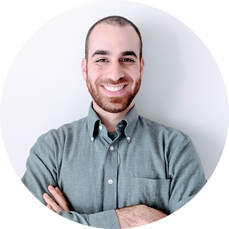
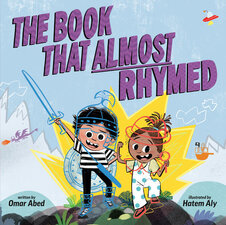
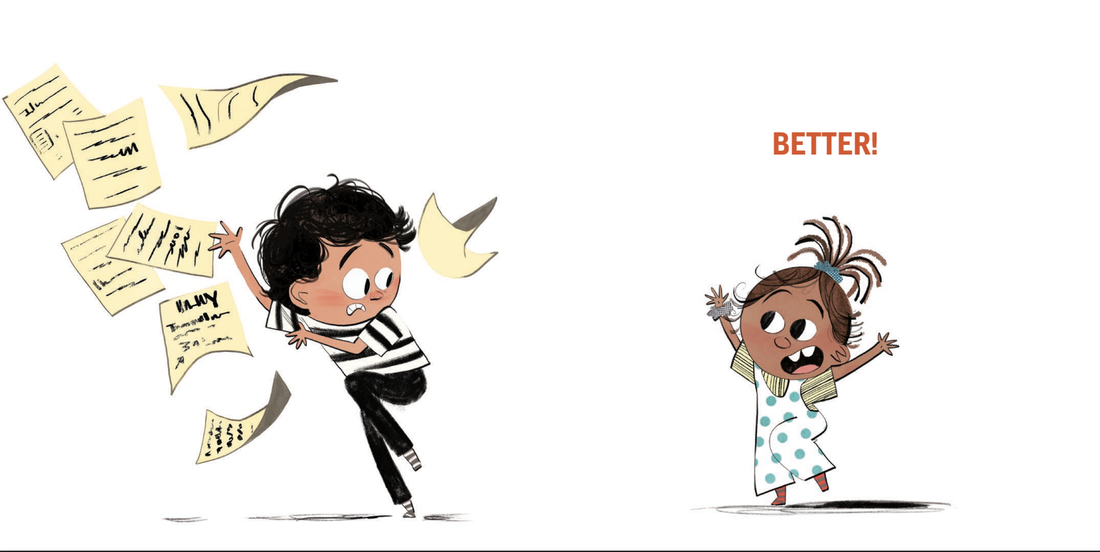

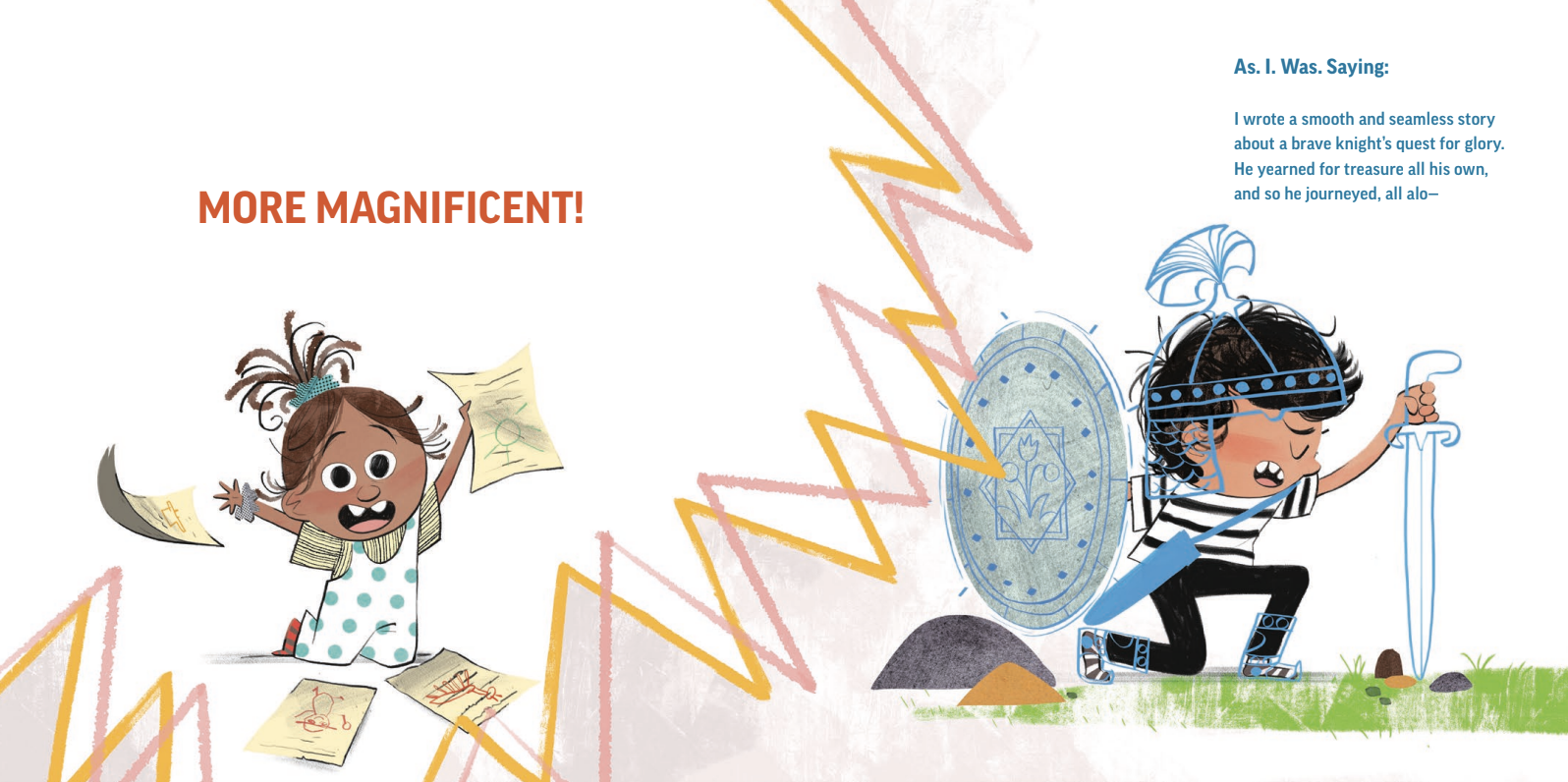
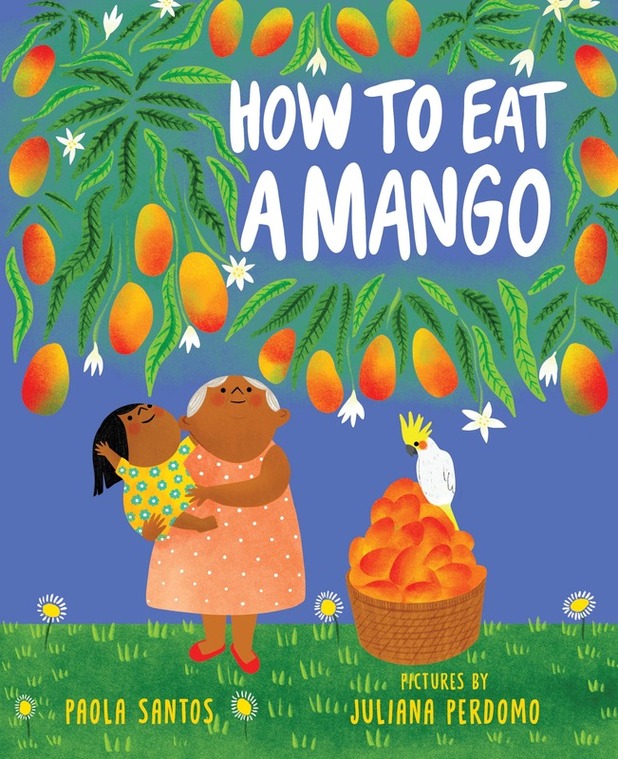
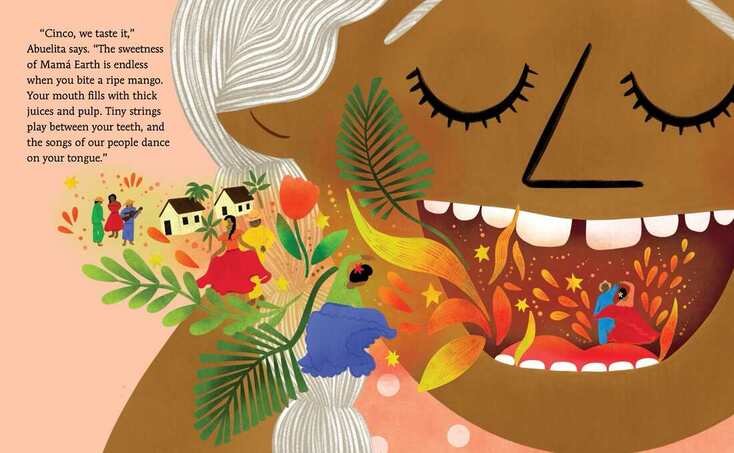
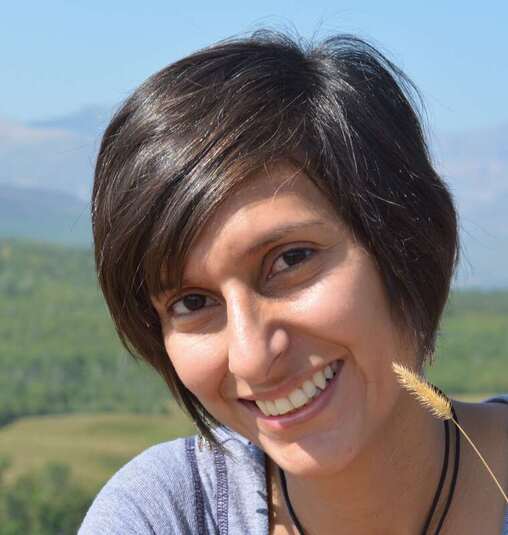
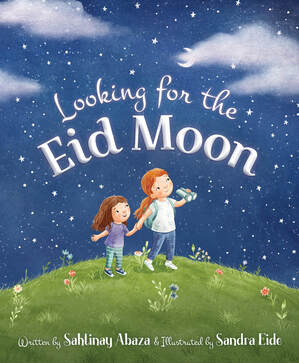
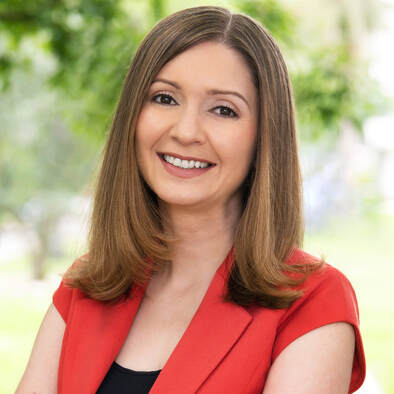
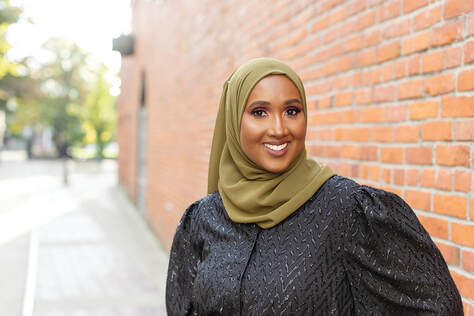
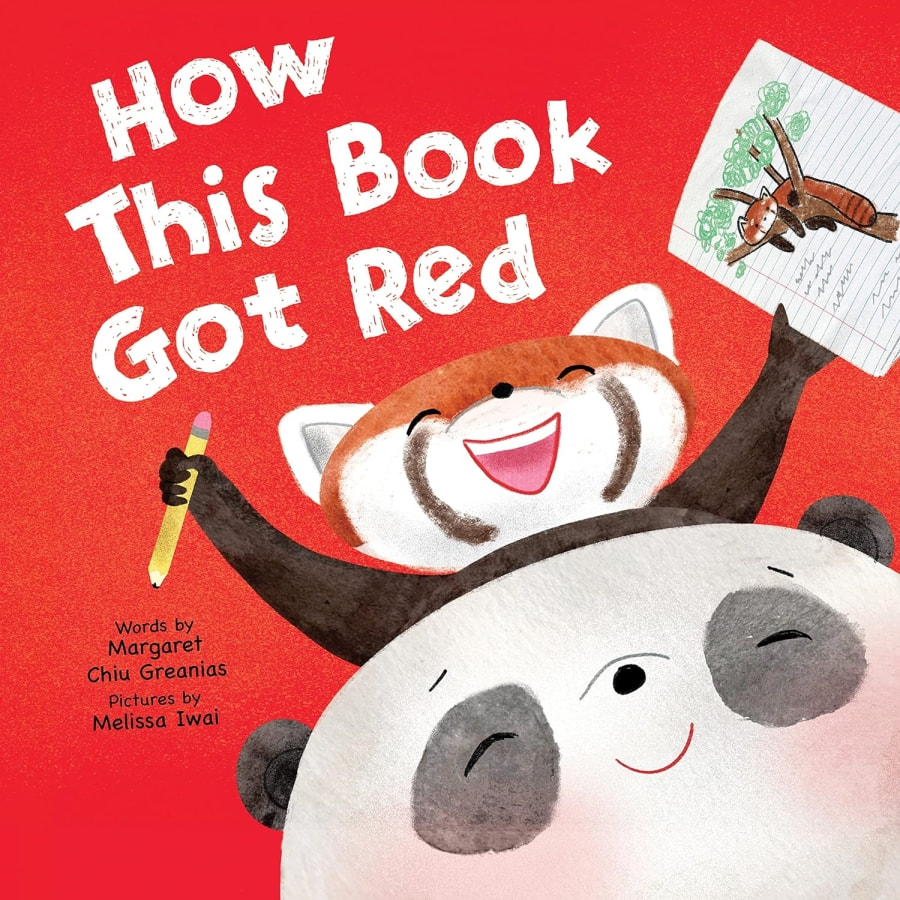
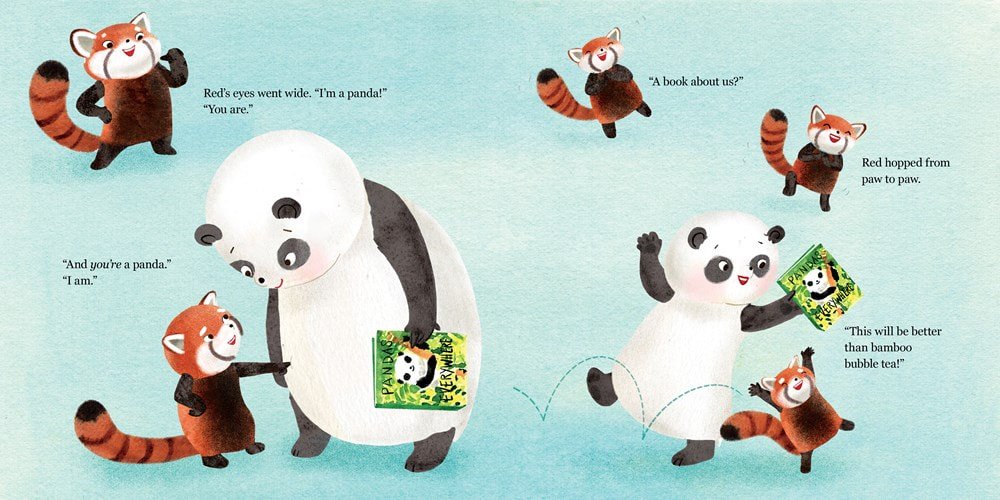
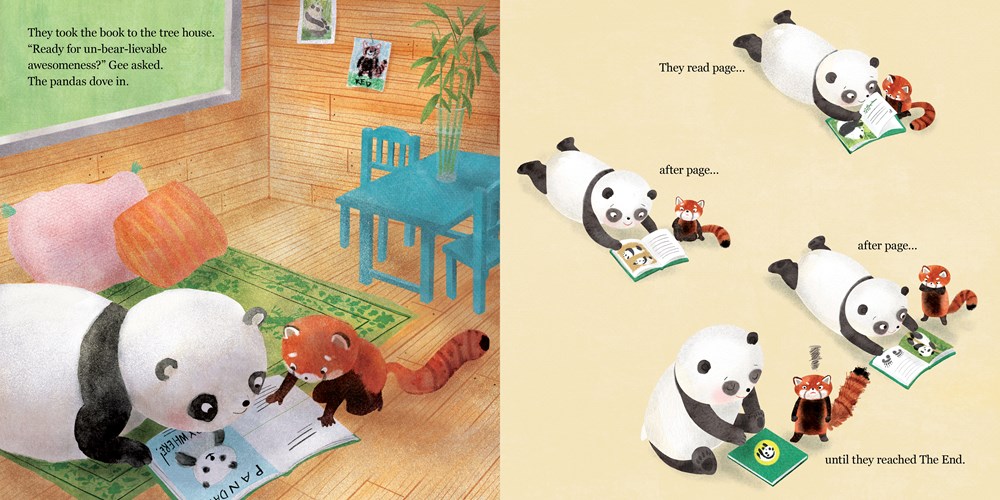
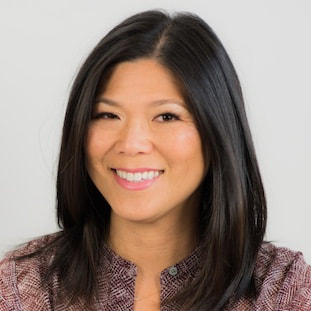




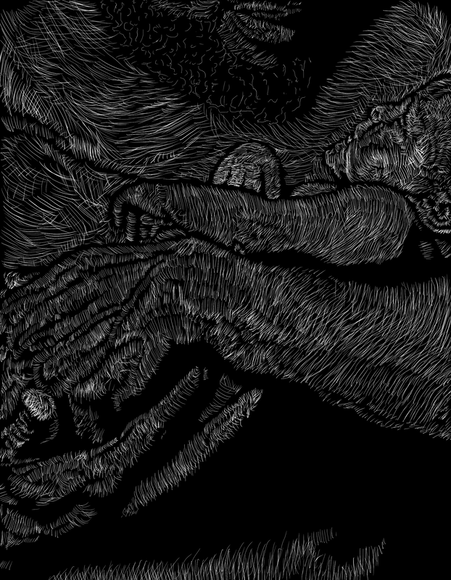
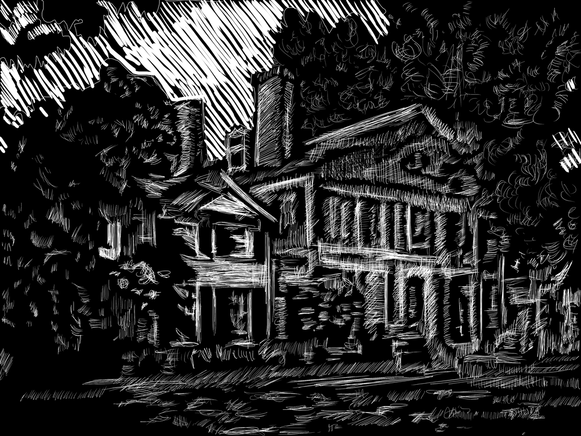
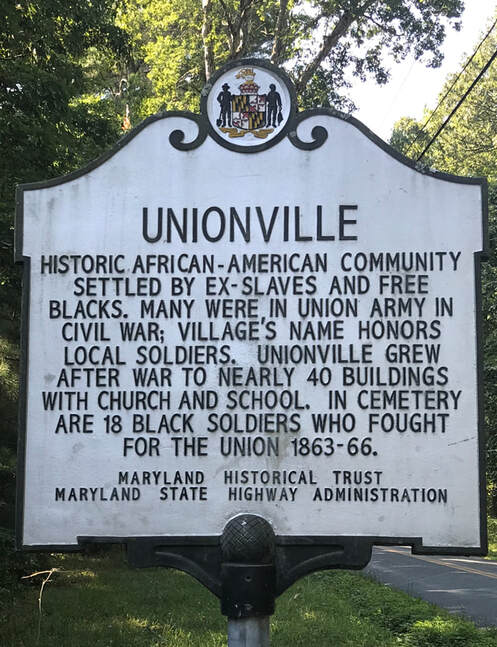
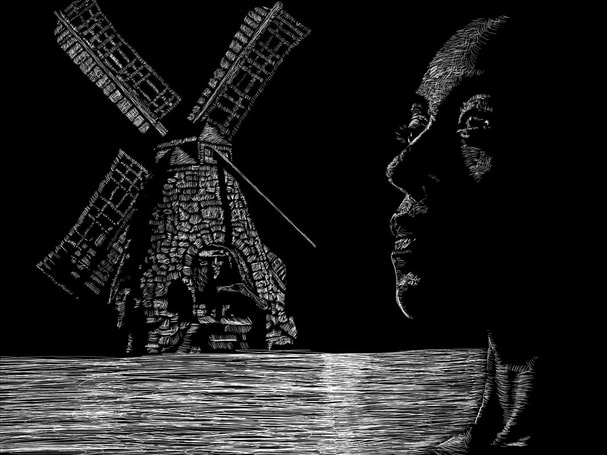
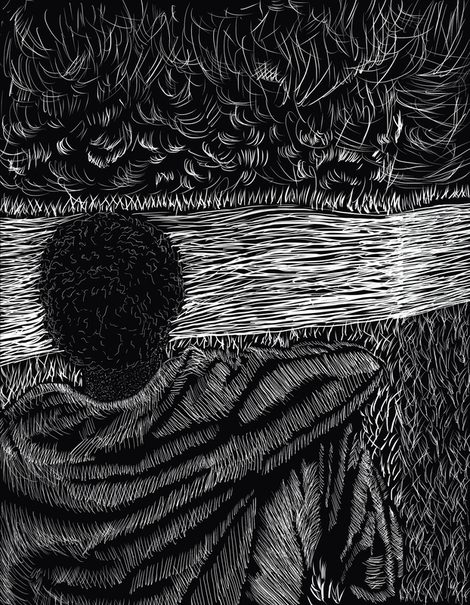
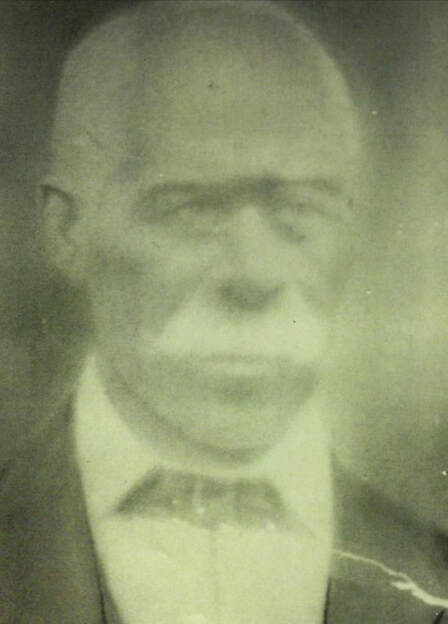
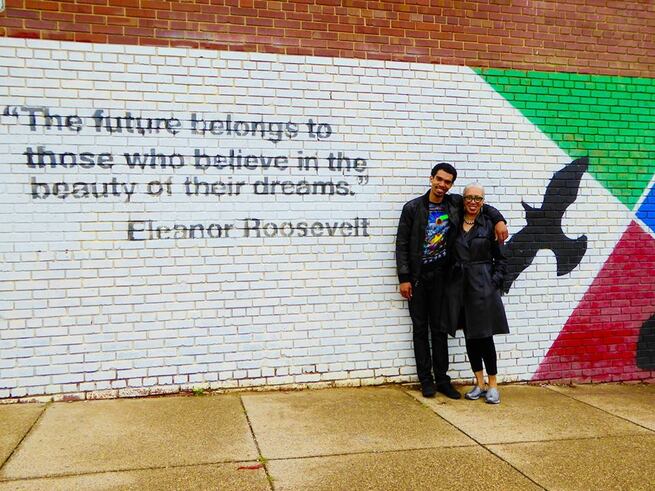

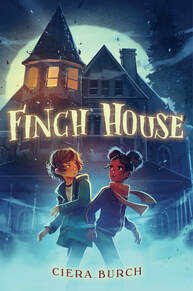
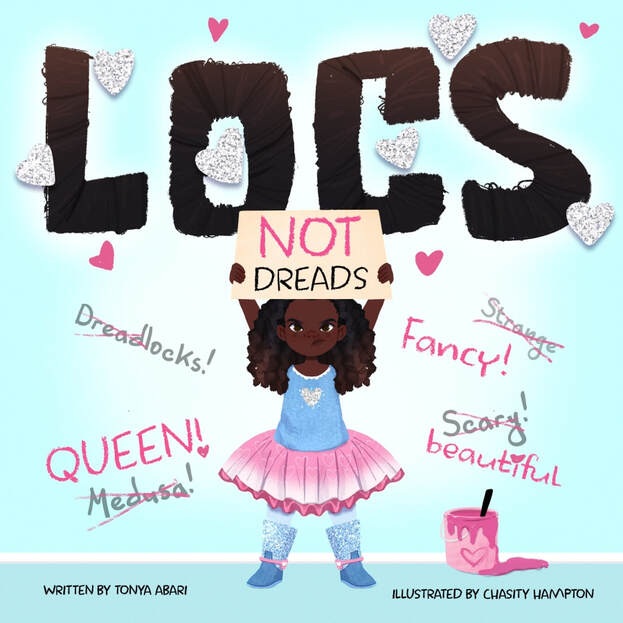
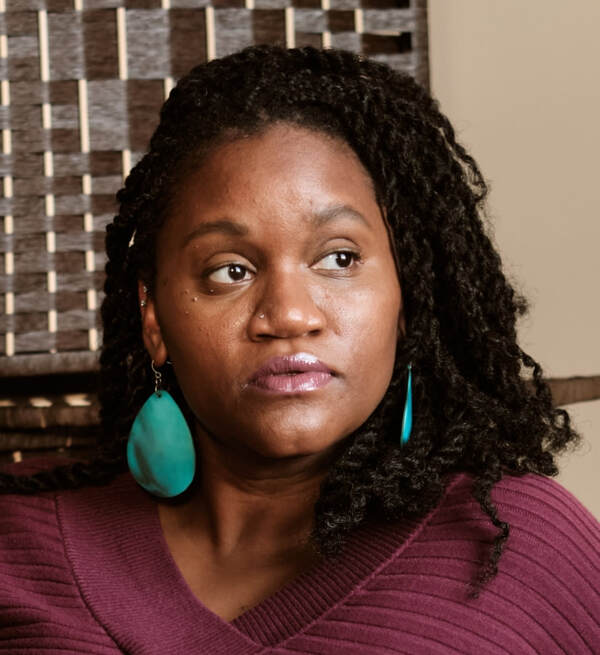
 RSS Feed
RSS Feed



